A nation of quiet villages and strong cheeses, of love and wine, of the glamorous Riviera and the towering Alps, France is a country of contrasts.
Paris teems with art, and fashionistas stroll the streets of Nice; it’s impossible not to fall in love with such a beautiful nation. In this article, we will explore the best places in France that every tourist should see at least once.
Why don’t we check out some of France’s top attractions?
1. Paris
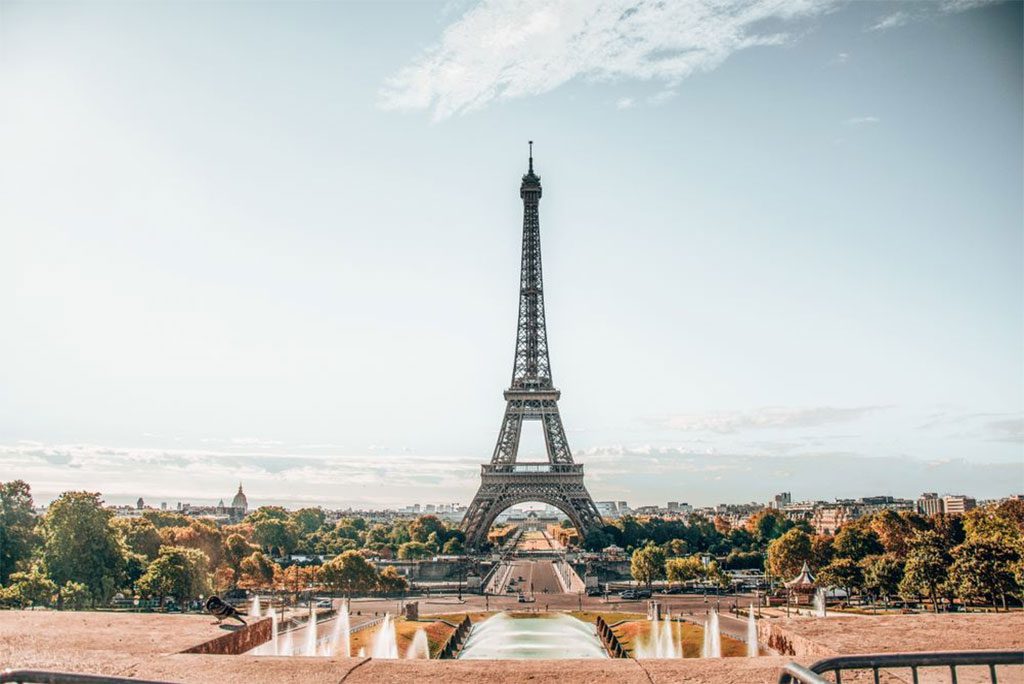
A stunning view of the Eiffel Tower in Paris during a holiday sunrise. Image source: SosnaRadosna/Shutterstock.com
No introduction is necessary for Paris, the renowned City of Love and City of Light, home to the Louvre, soaring Montmartre, the Latin Quarter where Hemingway brushed shoulders with Ginsberg, the flowing Seine, Notre Dame, and the distinctive silhouette of the Eiffel Tower. This huge and legendary capital city of France is a must-see for first-time visitors to the country. This kind of thing almost never lets me down. No way, not with all the enticing wine bars, beautiful Versailles, impressive Arc de Triomphe, opulent Champs-Elysees, eerie Pere Lachaise cemeteries (Jim Morrison, among others), iconic structures on Ile de la Cite, outdoor cafes on St. Martin, and so forth. And on!
2. Porquerolles
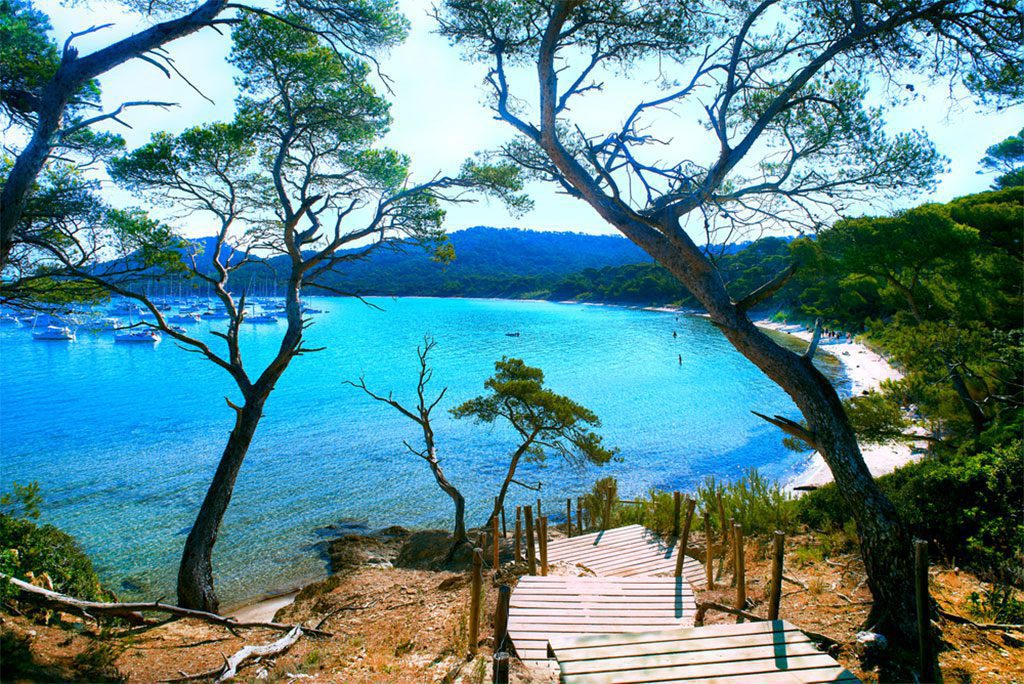
A beautiful view of the beach at Porquerolles on the French coast of the Mediterranean. Image source: synto/Shutterstock.com
Porquerolles, a bowl-shaped island in the Mediterranean Sea, is one of the lesser-known gems of the French Riviera despite its sparkling beauty amid the sea’s blue waters. There are no bridges connecting the island to the mainland, and only clicking bicycle wheels provide access to the island’s many isolated coves, rocky inlets, arches of ivory-white sand, and attractive port villages. These rumble over rocky paths and past flowering sunflower fields in a circle around the island’s centre, giving visitors a chance to see Spanish fir forests and swaying coastal pines, smell eucalyptus and myrtle, and experience complete solitude as they hop from one of the many picture-perfect beaches to another.
3. Marseille
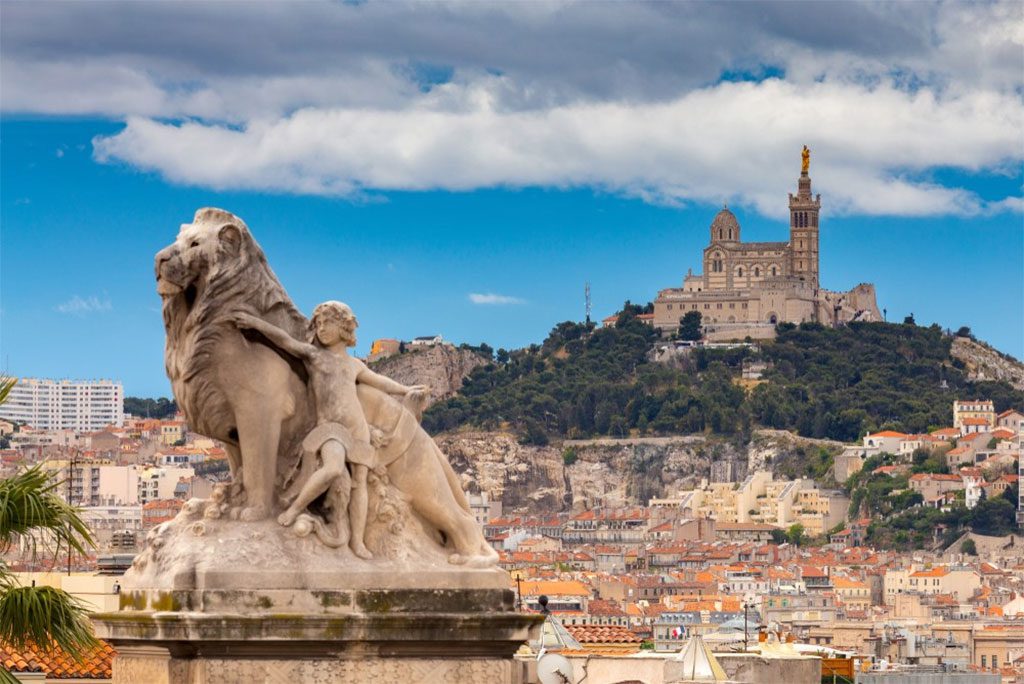
A sunny day at the Notre Dame de la Garde Cathedral in Marseille, France. Image source: kavalenkau/Shutterstock.com
Marseille’s great old dame exudes confidence, heritage, and panache. It has been formed by the Greeks, the Romans, the Anjou Dukes, the Provencal nobles, and the French imperialists; it hosted Dumas’s renowned Count of Monte Christo; and today, it is the second-largest city in France. It protrudes sharply into the Mediterranean, surrounded by the Calanque cliffs and boasting what many consider to be the most famous port neighbourhood in all of Europe: Vieux Port. At the heart of the city, under the watchful gaze of the Byzantine-faced Notre Dame de la Garde atop the hill, are a number of maritime museums and the picturesque Le Panier neighbourhood, the oldest and most fascinating part of town.
4. Lyon
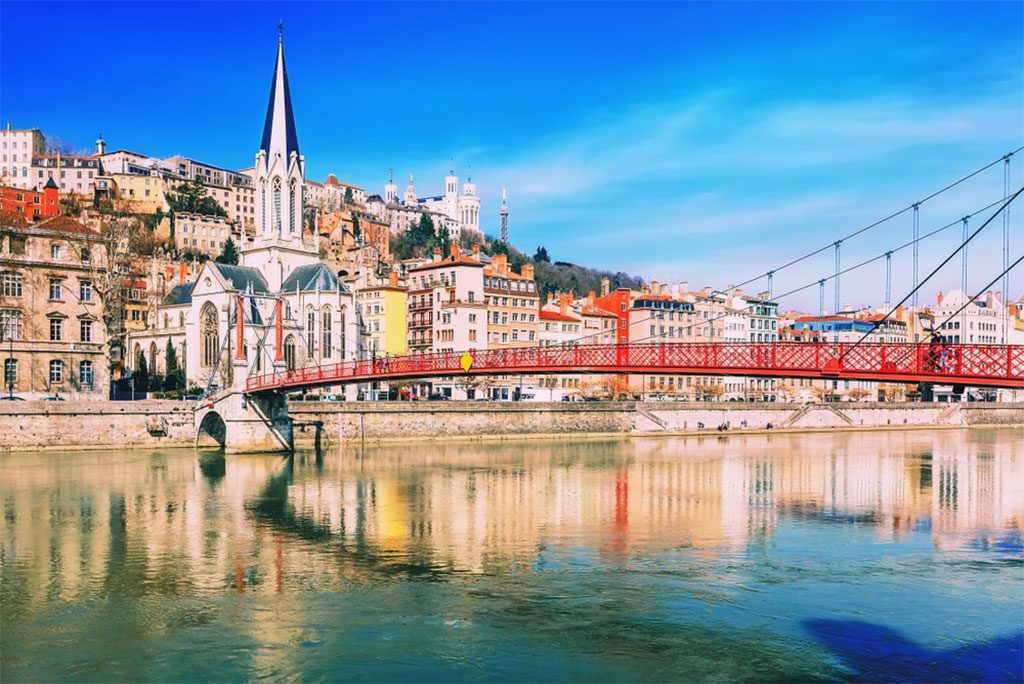
The pedestrian Saint Georges footbridge with the Saint Georges church in the background in Lyon, France. Image source: tianalima/Shutterstock.com
Old Lyon is one of the most historically significant urban areas in all of Europe. This city is UNESCO-recognized and brimming with Roman amphitheatres and Renaissance palazzi. It is one of France’s most popular tourist destinations. It is recommended that visitors begin their exploration of Lyon with a stroll through the historic district of Vieux Lyon, which is clustered along the Saone in a magnificent display of 15th and 16th century buildings, such as the picturesque Traboules and the ornate St. Jean Cathedral. Presqu’ile, at the heart of the twin river ways, bustles with coffee shops, high-fashion boutiques, and opera theatres, while Fourviere hill, further up, has enormous Christian churches showing a richness of Gothic and Byzantine art. At the same time, Croix-Rousse is bursting at the seams with Roman artefacts and memorials to the city’s beloved Lumieres.
5. Strasbourg
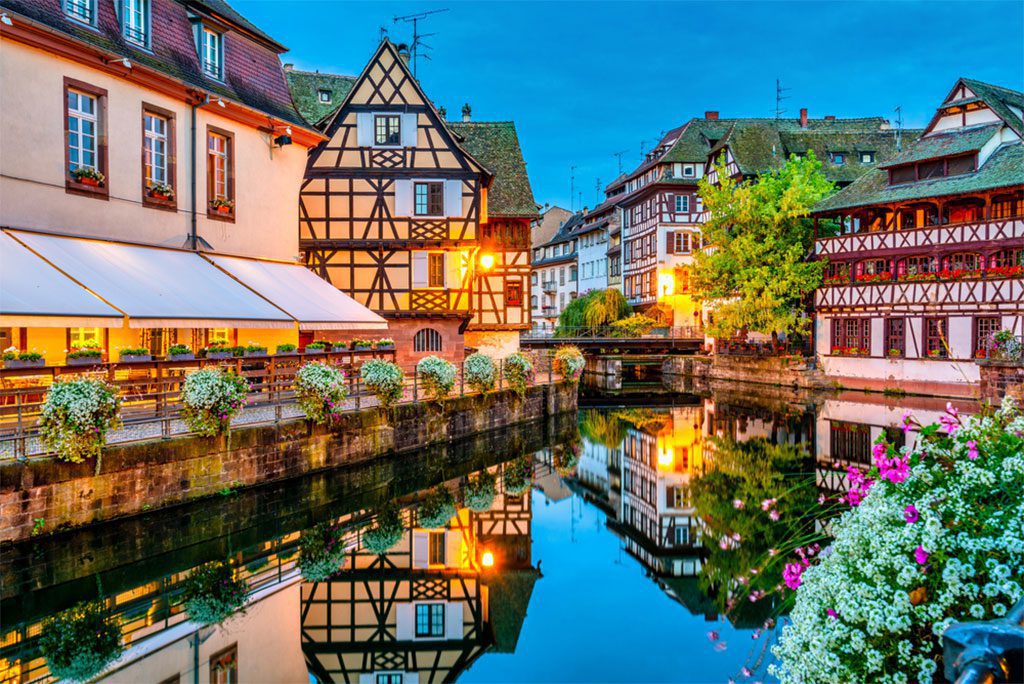
A beautiful view of the water canal in the old town of Strasbourg, Alsace, France. Image source: Pajor Pawel/Shutterstock.com
At first impression, the Germanic residences and Rhineland-style half-timbered structures of Strasbourg may make the city appear more German than French. But this prosperous city on the very edge of Alsace is home to a unique cultural mashup that can’t be found anywhere else in the country. It’s thriving with Gewurtztraminer and Reisling wines, Kronenbourg beers, choucroute cabbage platters, and more attractive Alsatian streets than you can shake a flammekuche pizza bread at. The picturesque Petite France neighbourhood attracts many sightseers due to its combination of narrow cobblestone streets, wooden buildings, and hanging rhododendron baskets that hang over the waterways. The European Parliament and the city’s courts, located in the city’s more recent section, are examples of the city’s cutting-edge modernity and political significance.
6. Gassin
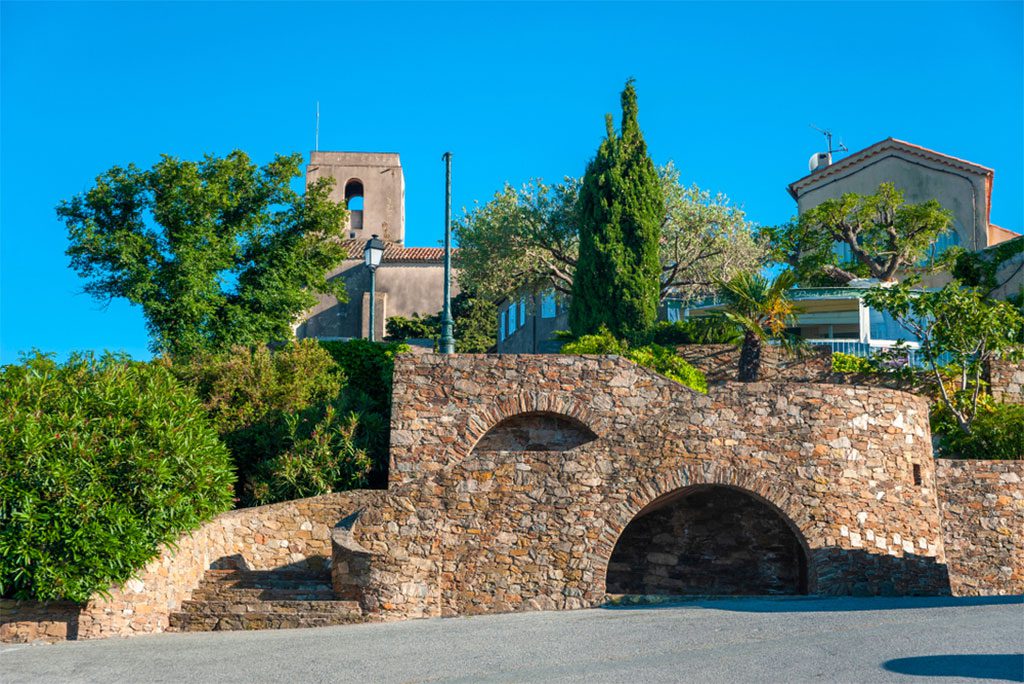
A view of the historical town wall in Gassin, Department Var of the province Provence-Alpes-Cote d´Azur. Image source: Juergen Wackenhut/Shutterstock.com
Located on the gentle foothills that rise between Saint Tropez and Saint Maxime, two jet-setter enclaves on the French Riviera, lies the charming tiny town of Gassin. The town is covered with bougainvillaea, and it is often considered to be the most beautiful in the nation. Its winding alleyways are so compact that they hide stairs and arches. The town’s fortifications are a legacy from when the Moors ruled southern France, and the ivy-covered houses and blue window shutters provide a picturesque backdrop for the many outdoor cafés and bistros that line the main strip.
7. The Loire Valley
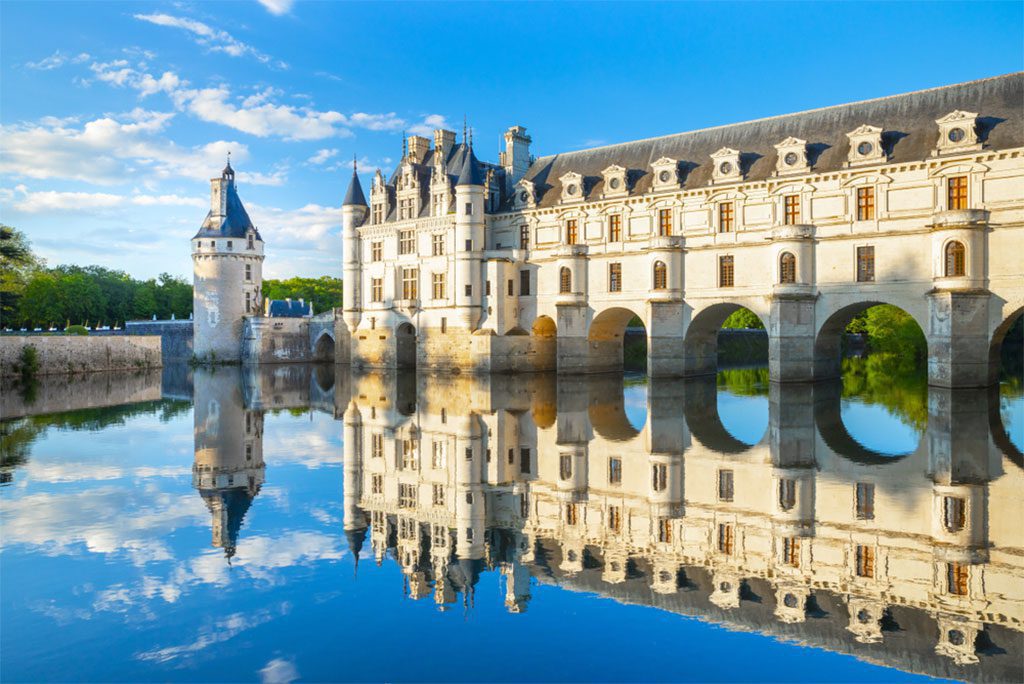
A stunning view of Chateau de Chenonceau, Loire valley of France. Image source: proslgn/Shutterstock.com
At over 280 kilometres in length, the cherished Garden of France traverses the very centre of France. From the banks of the meandering Loire River, a beautiful landscape of rolling vineyards and well-maintained wineries, Sancerre reds and Muscadet whites, opens out. In spite of the fact that the countryside is beautiful to look at and explore (by bike), with its rolling hills and grass-come-sunflower patchwork, UNESCO included the Loire because of its human history. This is shown in the many magnificent chateaux and hilltop castles found across France, such as the Gothic behemoth at Amboise (the former residence of the French monarchs) and the ornate medievalism of the Chateau de Chambord.
8. Arras
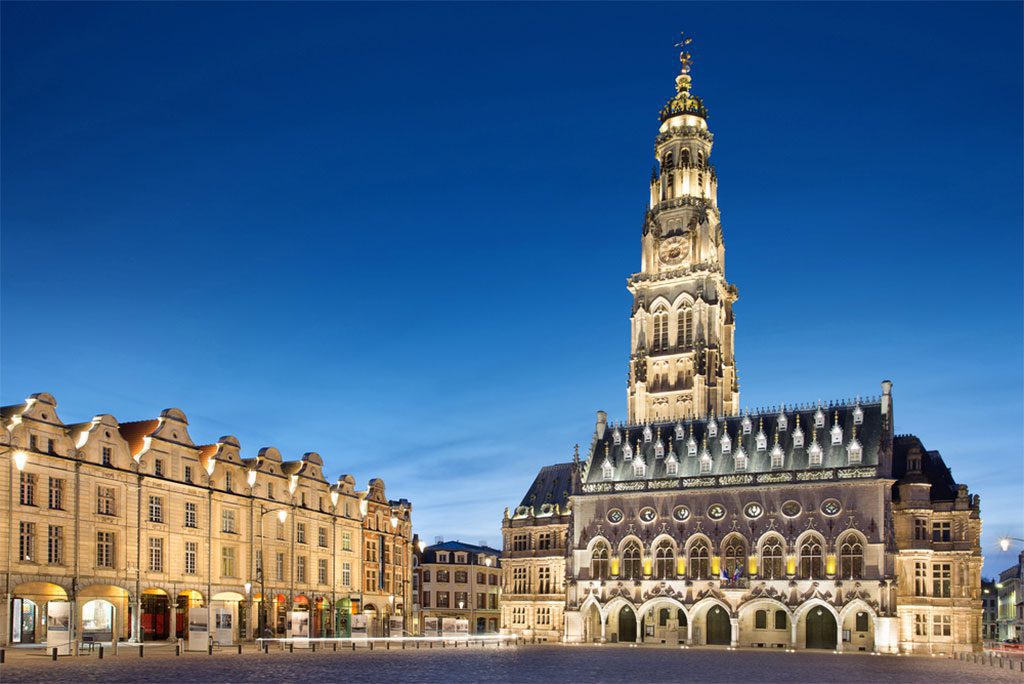
A view of the Heroes Place in Arras, France. Image source: Production Perig/Shutterstock.com
Away from the beaten path Arras is conveniently located halfway between the busy city of Paris and the busy port town of Calais. Due to its rich history and the fact that it changed hands many times between the Romans, the Dukes of Flanders and Burgundy, the Spanish Habsburgs, and the French monarchy over the course of many centuries, Arras attracts a lot of tourists all year round. The Gothic belfry in the city’s heart, which has been recognised by UNESCO, is its crowning architectural achievement, towering above the city’s cobblestone squares and the Flemish apses of its townhouses. Also, the city is underpinned by the famous Boves, which make up one of the largest urban underground networks in all of Europe.
9. The Beaches of Normandy
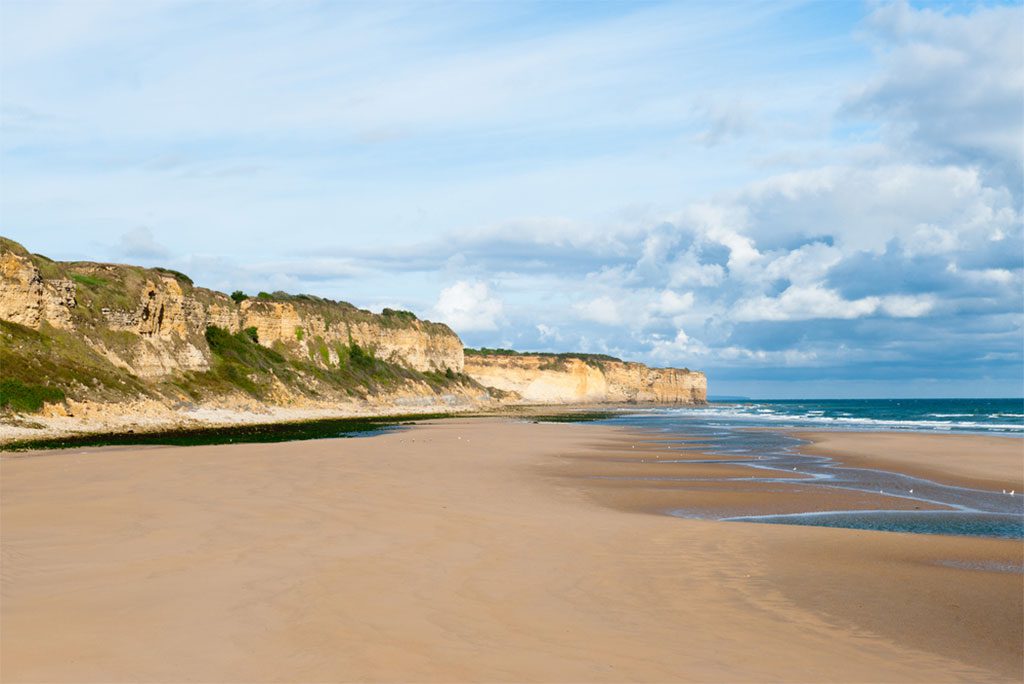
A view of Omaha Beach, one of the five landing beaches in the Normandy landings during World War II. Image source: CTatiana/Shutterstock.com
As a result of these events, the beaches of Normandy have become almost synonymous with the turbulent wars of 1944. Visitors to the northern region’s string of chalk cliff-backed sands and undulating dunes today can choose to visit the iconic battlefields that were the main contact points on D-Day, moving quickly between the towering memorials to the fallen on Omaha Beach and the ruins of the gun batteries and cement bunkers of the infamous Atlantic Wall. However, the town of Normandy has managed to overcome its troubled history. A mighty mediaeval cathedral towers above the English Channel at Mont Saint-Michel; charming Cistercian abbeys dot the countryside; and the meandering Seine is a walker’s paradise in the south.
10. Chamonix
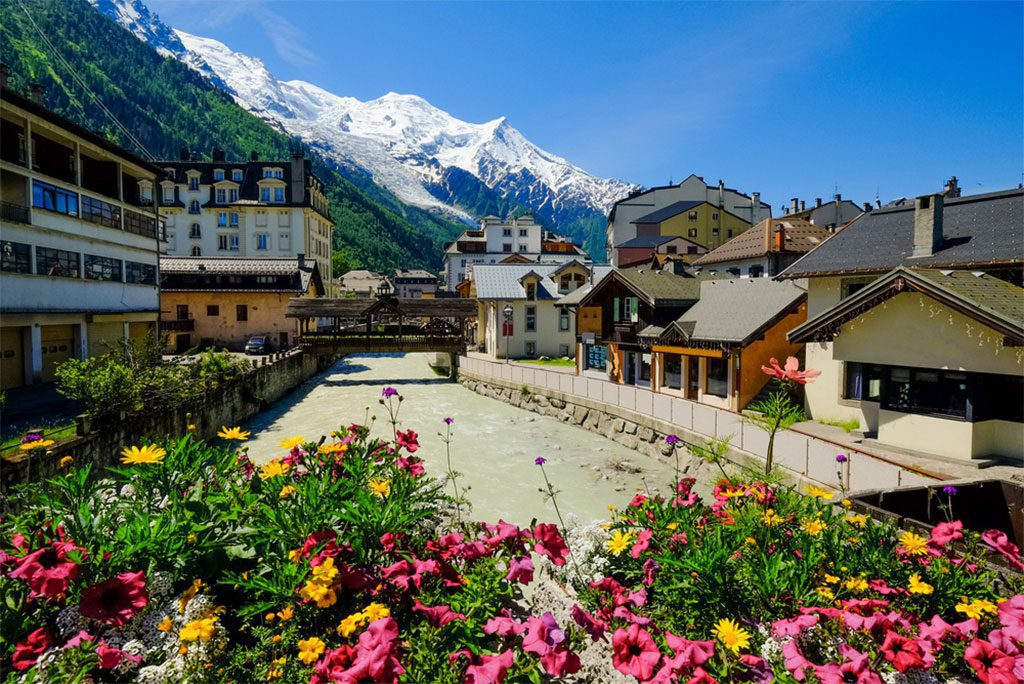
A view of downtown Chamonix during the summer in France. Image source: Elisa Locci/Shutterstock.com
In the heart of the French Alps, where the icy peaks of Mont Blanc (Europe’s tallest peak outside of the Caucasus) rise to an intimidating 4,800 metres above sea level, Chamonix has become a symbol for mountaineers, winter sports enthusiasts, and adventure tourists. The resort town, which hosted the first Winter Olympics, is home to 760 acres of skiable terrain and some of the world’s greatest off-piste riding (guides are recommended). The town is hidden from view by the towering mountains above it, but visitors may take the Aiguille du Midi cable car to the summit for awe-inspiring vistas of the surrounding Alps. Others, though, will stay downstairs, where trendy eateries and spa hotels sit side by side.
11. Corsica
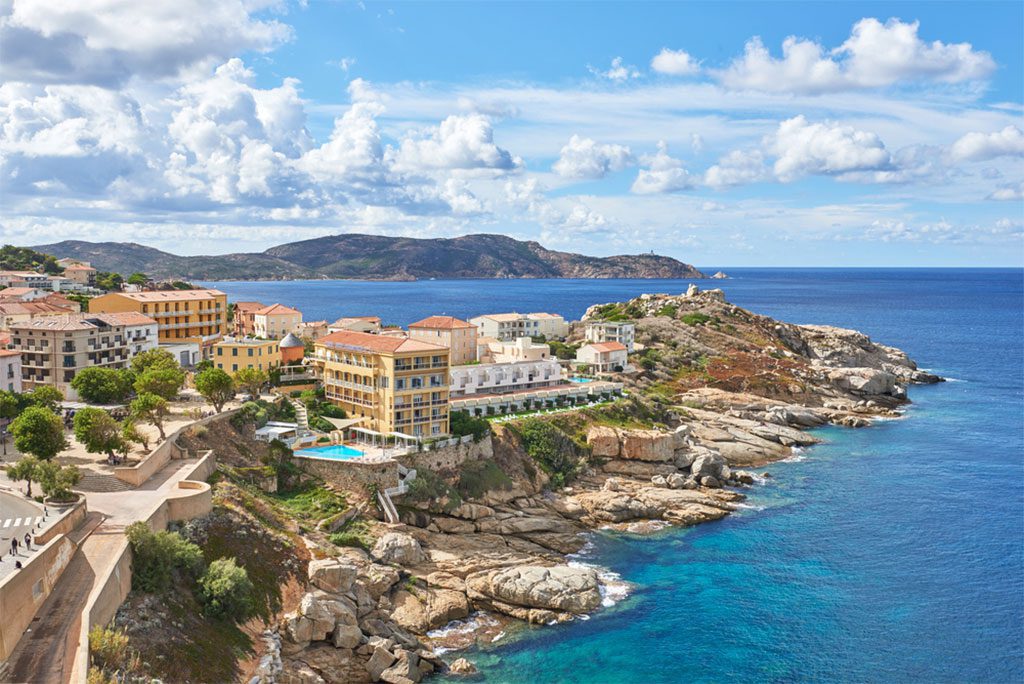
Enjoy the beautiful view of Calvi’s old town and harbor in Corsica, France. Image source: stilikone/Shutterstock.com
Corsica, like a teardrop, is nestled in the Tyrrhenian Sea, and its cliffs rise like a Greek phalanx from the Mediterranean. The area is rugged and untamed, with mountains and cliffs ranging from the snowy white sands of the coast to the dark green forests of the interior. It’s hardly unexpected that Corsica has a distinct personality from the rest of France, given its history as a Greek colony, a member of the Roman Empire, and the mediaeval control of Italian dynasties. The Tuscan citadels tower ominously above Bonifacio’s olive trees in the countryside, and the local folk music has an oddly Latin flavour. Despite all of that, Ajaccio, on this island, is where Napoleon was born in 1769.
12. Lille
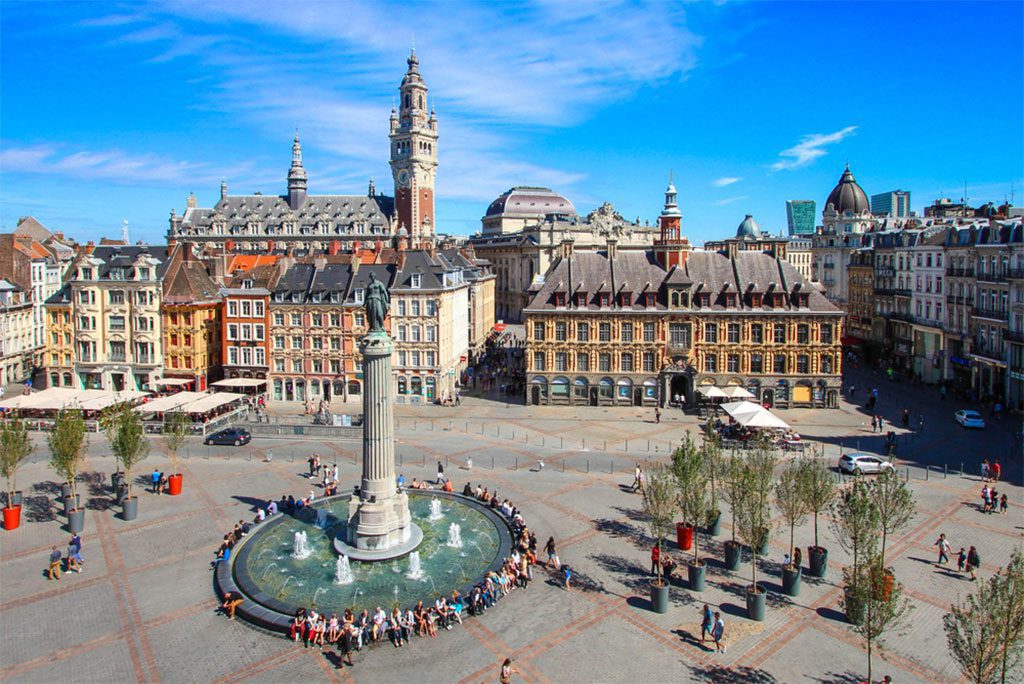
Admire the beautiful view of the main square and belfry in Lille, France. Image source: MisterStock/Shutterstock.com
Lille, a sprawling city on the border between the Dutch-speaking Low Countries and the Flemish region of Belgium, brings together different cultural elements from around northern Europe. The city has gained a reputation as one of France’s gritty, labouring centres since the industrial revolution, but the city center’s Flemish streets now ooze with a confident modernity. The city of Lille is well worth a visit for many reasons, not the least of which are its excellent Beaux-Arts museum, its large number of local students (leading to a lively nightlife scene), and its cluster of Belgian-inspired chocolatiers and waffle stands.
13. Nimes
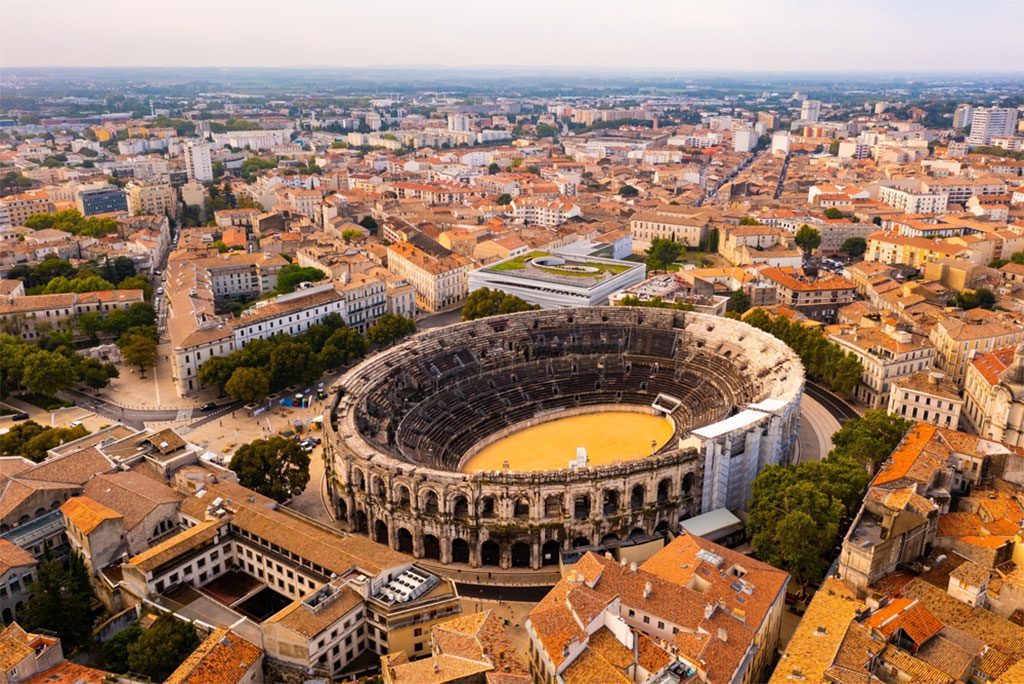
Discover the historical area of Nimes from above. Image source: BearFotos/Shutterstock.com
The city of Nimes, a crown gem of Languedoc-Roussillon, is located between the rocky gorges of the Cevennes range and the sandy shores of the Mediterranean Sea. The town’s huge Roman amphitheatre, the best preserved in all of France, is plain to see. Just below, in the shadow of the 1st century megastructure’s vast apses, the Maison Carree’s colonnades carry on the Roman motif, while the Pont du Gard on the outskirts of town is a photographer’s paradise. This once-major Gaul city is now a hive of activity because of its many outdoor markets and cafés, striking a good mix between its ancient facade and the lively vibes brought in by the French Riviera to the south.
14. Carcassonne

Marvel at the largest medieval castle and walled town in Europe – Carcassonne, France. Image source: leoks/Shutterstock.com
Carcassonne, which looks like something out of a Tolkien novel, is one of Europe’s most stunning and impressive mediaeval citadels. During the Middle Ages, when France and Aragon were at odds over territory, this picturesque Languedoc draw became of importance. Today, it proudly bears the UNESCO label and shields a winding ancient town behind its ramparts. La Cite is a maze of stone-paved alleys and shops selling medieval-style wares. To top it all off, some of the finest Vins de Pays wineries in France can be found in the city’s rural suburbs. No, really!
15. Nice
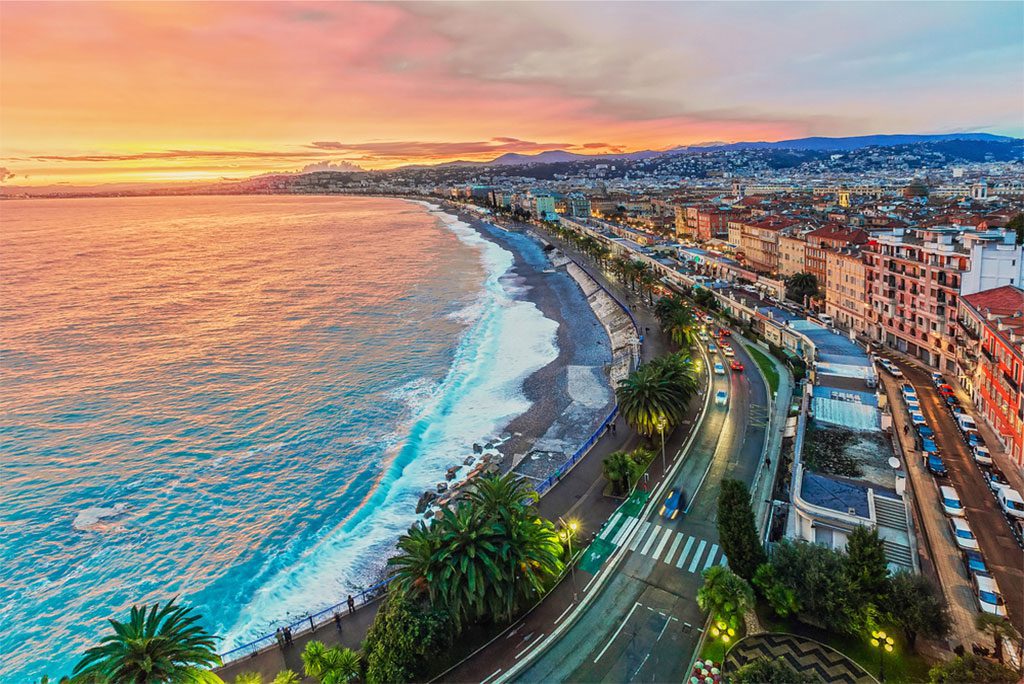
Enjoy the magical atmosphere of Nice in the evening. Image source: Fishman64/Shutterstock.com
Surrounded by the French Riviera’s sandy beaches in the summer, Nice is more than simply a place to see rows of Ferraris and Porsches and bobbing billionaire boats. One of the largest commercial outposts in the French Mediterranean, it was founded by the Greeks of Massilia in pre-Roman Gaul. Later, influences from Savoy gave the city an Italian appeal, while English nobles in the 1800s filled the town with the now-legendary Promenade des Anglais, an arc of sun-splashed, palm-shaded promenade that spans the length of its coastal casinos and bars. Cimiez is the name for ancient remains and Roman antiquities, while the mediaeval residences of Vieux Nice add to the area’s attractiveness.


